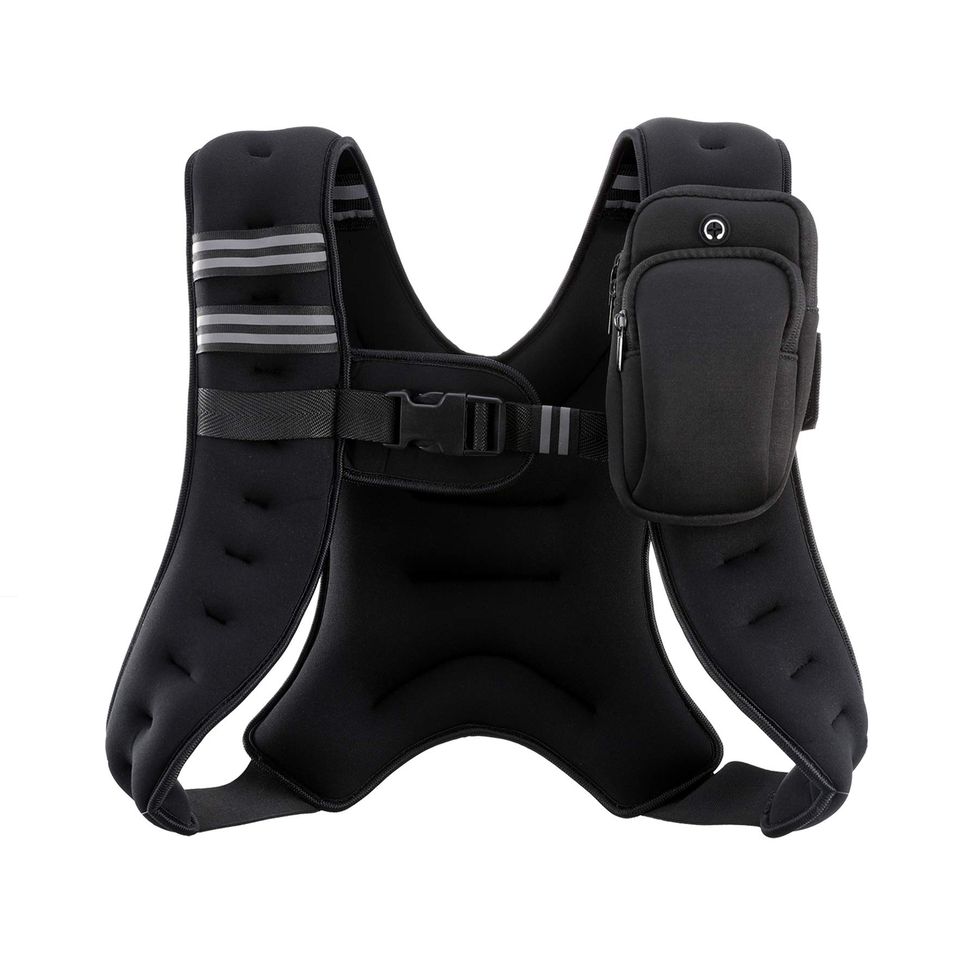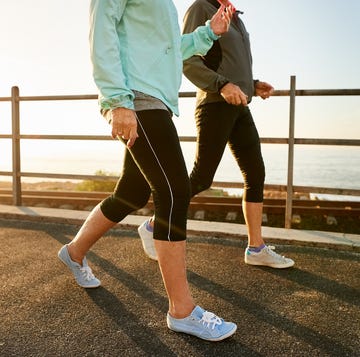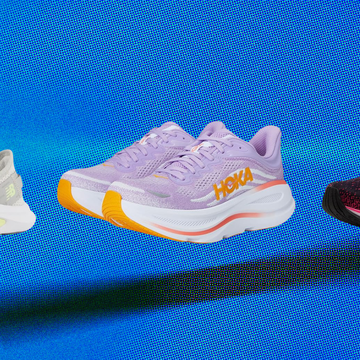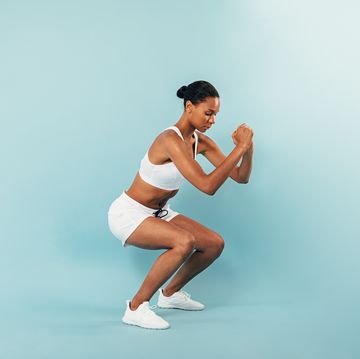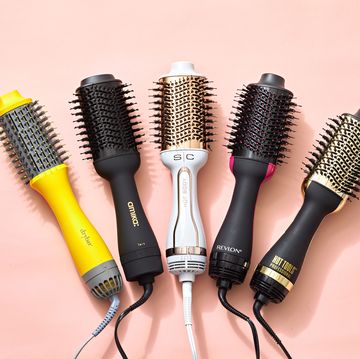One of the hottest fitness trends on social media is modeled on a military training exercise — but it's not as intense as it seems (and no camo required!). Rucking involves carrying a weighted backpack or vest on walks or hikes, with a goal of building strength and endurance.
Some people swear by the health benefits of rucking, and it makes sense that carrying additional weight will make you stronger (ever lugged a toddler around a museum?), but I was curious about whether or not I’d notice benefits from wearing a weighted vest during various activities. Before I got started, I sought input from experts on the pros and cons of weighted vest and how to use it most effectively.
Are weighted vests beneficial?
There’s quite a bit of evidence that weighted vests can be helpful for some people. “Research on deconditioned individuals shows a vest can increase overall energy expenditure when worn throughout the day, especially for those who move frequently—think landscapers, teachers on their feet, or warehouse workers,” says Lauren Shroyer, MS, ATC, vice president of product and innovation at the American Council on Exercise. “However, if you’re already active and conditioned, the impact is likely minimal.”
That being said, there are other benefits, such as for bone density. “The vest is worn to increase the skeletal loading that occurs as a result of increased ground reactive forces,” says Nancy R. Kirsch, PT, DPT, PhD, FAPTA, chair of the Department of Rehabilitation and Movement Sciences at Rutgers School of Health Professions. “This increase in mechanical stress helps to activate the development of osteoblasts, the cells that build bone.”
If your goal is to improve bone density, it’s recommended that you work with a physical therapist to design a program for using a weighted vest properly. “What's most important is the type and effectiveness of the exercise done while wearing the vest,” says Kirsch.
Of course, this may seem obvious, but you’ve also got to move to get benefits. For sedentary individuals, simply wearing a vest while sitting does nothing. “If you want a vest to make a difference, walk with it, do body weight exercises or incorporate it into your training—passive wear alone won’t cut it,” says Shroyer. “Wearing a weighted vest during exercise appears to have the greatest impact on two groups: deconditioned individuals seeking to increase calorie burn and improve strength with minimum intensity, and highly-trained individuals looking for a performance advantage.”
How I used the weighted vest
Armed with this knowledge, I started my rucking experiment. My editor had the Hyperwear Hyper Vest FIT Weighted Vest sent to me to try. It’s well-made with little pockets to hold ½-pound weights (for a total of 10 pounds) and a convenient lacing system on the sides so you can cinch it up to fit snugly against the body. I also like that the vest is washable and can be air-dried.
I’m tall and long-waisted, so the vest seemed too short at first, as if I was wearing a shirt that wasn’t long enough to tuck into my pants. It also felt confining, like a sports bra that was too snug. But full disclosure: I’m sensitive to most tight clothing, even turtlenecks.
Regardless, I forged ahead. Like any form of exercise, starting slowly and building intensity is key. The first day, I wore my vest (with half the weights) while going about some basic chores such as folding laundry, going up and down the stairs and cooking. Within about a half-hour, it felt normal — I almost forgot I was wearing it.
Next up: A casual walk around the neighborhood while pushing a stroller. It felt natural by now, and I also noticed that wearing it made me more conscious of my walking form. That’s a good thing because I’ve been working with a trainer on core strength. Interestingly, wearing the vest made me more cognizant of how to engage the transverse abdominals when in motion. Even at a faster walking pace, I didn’t feel the vest was too cumbersome.
The verdict
I’ve worn the vest for a few weeks, off and on, slowly adding weights to achieve the max weight of 10 pounds. I think it’s an excellent tool to add to one’s overall fitness plan, without having to think about it too much. It’s also useful for days when it’s too hot/ chilly/ wet/ icy because you can wear it in the house while you’re going about your chores. It’s far better than making an excuse that you can’t go for a walk, and then doing nothing at all.
I think the biggest benefit for me is that the vest has made me more aware of how to focus on and correct my form when walking — that is, you really can't slouch when wearing it so I feel like my posture has improved. I also like that it has potential bone density benefits, mostly because I get bored by free weights. This is a way to include weights as part of my weekly training without having to do it more intentionally. I'm all for multi-tasking!
If you're interested in adding a weighted vest to your exercise routine, just check in with your doctor or consult a physical therapist if you have any musculoskeletal issues, such as osteoporosis or low back pain. Also, make sure to choose a vest that is infinitely adjustable, such as the Hyperwear Hyper Vest FIT Weighted Vest. “Fit is key when choosing a weighted vest,” says Shroyer. “An ill-fitting vest can put unnecessary strain on the shoulders and lower back, leading to discomfort or even injury.”




